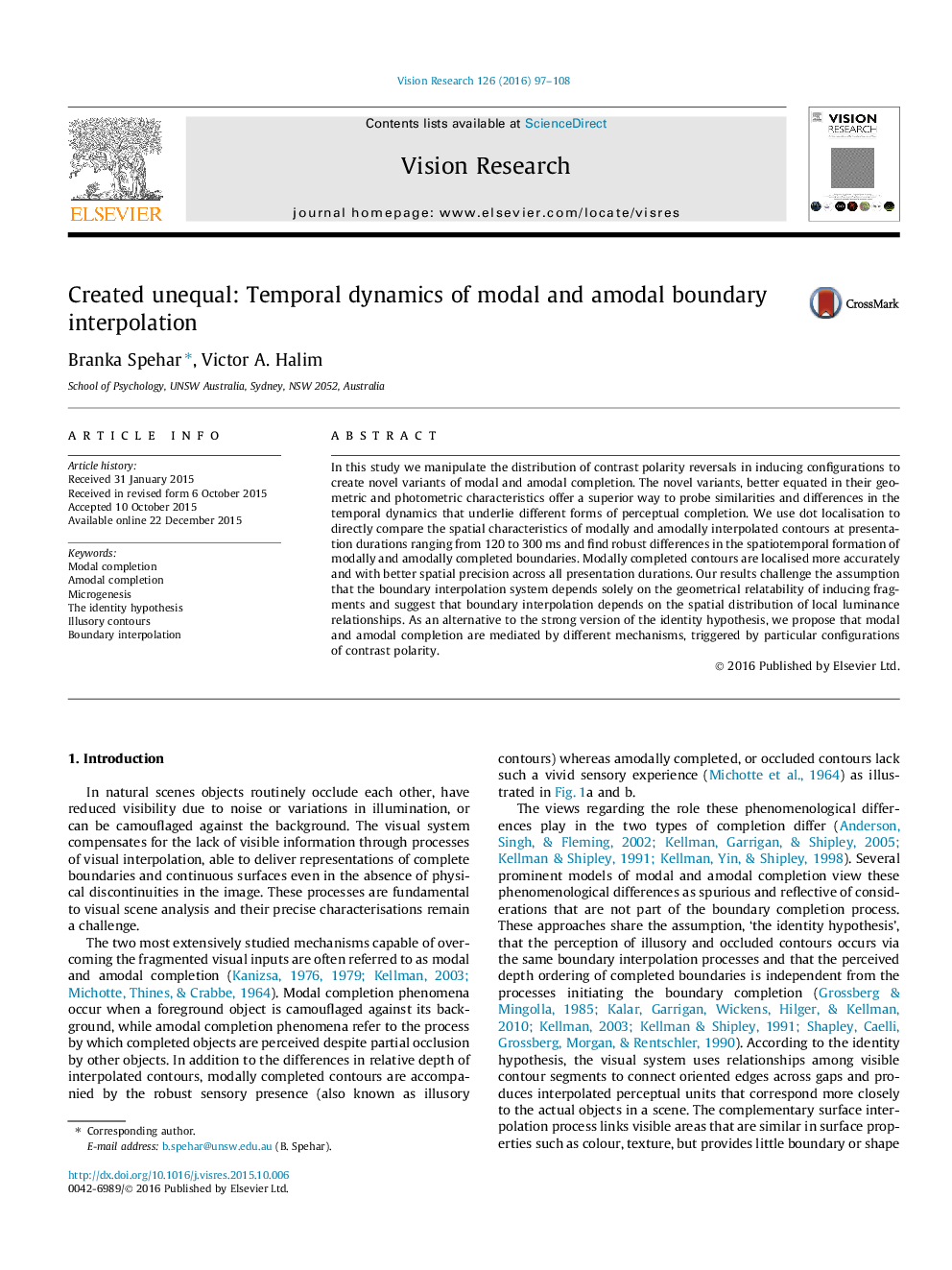| Article ID | Journal | Published Year | Pages | File Type |
|---|---|---|---|---|
| 6202904 | Vision Research | 2016 | 12 Pages |
â¢Boundary interpolation is influenced by contrast polarity variations.â¢Modal and amodal completion exhibit different temporal dynamics.â¢Modal contours localised with better accuracy and spatial precision than amodal.
In this study we manipulate the distribution of contrast polarity reversals in inducing configurations to create novel variants of modal and amodal completion. The novel variants, better equated in their geometric and photometric characteristics offer a superior way to probe similarities and differences in the temporal dynamics that underlie different forms of perceptual completion. We use dot localisation to directly compare the spatial characteristics of modally and amodally interpolated contours at presentation durations ranging from 120 to 300Â ms and find robust differences in the spatiotemporal formation of modally and amodally completed boundaries. Modally completed contours are localised more accurately and with better spatial precision across all presentation durations. Our results challenge the assumption that the boundary interpolation system depends solely on the geometrical relatability of inducing fragments and suggest that boundary interpolation depends on the spatial distribution of local luminance relationships. As an alternative to the strong version of the identity hypothesis, we propose that modal and amodal completion are mediated by different mechanisms, triggered by particular configurations of contrast polarity.
